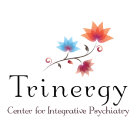Paradigm Shift in Psychiatry
It has been said that the brain and mind are the last frontier to conquer. The field of modern psychiatry has undergone so many changes within the last century that it has left some practitioners and clients confused and bewildered. Depression syndrome exemplifies the changes and trends in thinking within the field of mental health.
It has been said that the brain and mind are the last frontier to conquer. The field of modern psychiatry has undergone so many changes within the last century that it has left some practitioners and clients confused and bewildered. Depression syndrome exemplifies the changes and trends in thinking within the field of mental health.
In the early 20th century, psychiatry focused primarily on the idea that mental illness was caused by early childhood experiences. The invention of psychiatric medicines in the 1950s radically changed the landscape. Neurochemical imbalance and the medications to treat it became the new bandwagon that all were asked to jump on.
A report released in October 2011, based on the National Health and Nutrition Examination Survey conducted between 2005 and 2008 on people over the age of 12, states that the rate of antidepressant use in the U.S. increased by almost 400% between 1988 and 2008. It also indicates that about one in every 10 Americans takes an antidepressant, and that antidepressants were the third most common prescription medication taken by Americans during the time of the survey.
However, not everyone with depression chooses to take medication, and questions remain about the efficacy of antidepressants. For instance, the Sequenced Treatment Alternatives to Relieve Depression (STAR*D) study published in 2006 showed that when depression patients were treated with the antidepressant Citalopram, the overall recovery rate was a mere 18%, whereas the recovery rate for the placebo averaged 36%.
The good news is that such studies are once again forcing us to understand mental illness and depression using new paradigms and to formulate better treatments for these conditions. Overall, this new research is hopeful. For the first time, we are able to see depression—and by default, mental illness itself—as a symptom of physiological imbalances within the delicate, interconnected web of systems that constitute the human body. This reconceptualization is making depression and mental illness in general something we can now understand and potentially heal.
Recent advances are moving past the mind-body connection and examining the body-mind influence to help us understand how the health of the body effects the health of the mind. For instance, the gut-brain connection describes the effect that the health of the microbiome—the friendly bacteria in the gut—has on mood, memory and behavior. New research has also increased the understanding of the stress response mounted by the adrenals and the necessity of having appropriate nutrients in our diet for healthy functioning of the body, brain and mind.
As a result of this new understanding, we are implementing new safe and effective modes of intervention. These avenues, which can be used singly or combined, include dietary changes (e.g., fish oil, vitamin D, eliminating artificial and processed food, identifying food sensitivities), healing and caring for the gut microbiome, repairing immune and hormonal problems, and psychotherapy, to name a few. Patients struggling with depression now have many more options than taking medication and hoping that it works.
Integrative psychiatrists are making this paradigm shift in understanding mental illness in order to better help their patients. The quest now is to dig deeper. New laboratory tests are specifically looking at causes of mental illnesses which inform treatment; for instance, certain genetic defects create specific nutrient deficiencies, and health practitioners can now use tests to determine this information and make appropriate recommendations.
Such integrative practices increase harmony between all the systems in the body, which helps the patient feel more alive and vital.
To read the referenced material, go to cdc.gov/nchs/data/databriefs/db76.htm (the October 2011 report) and ncbi.nlm.nih.gov/pubmed/17074942.

